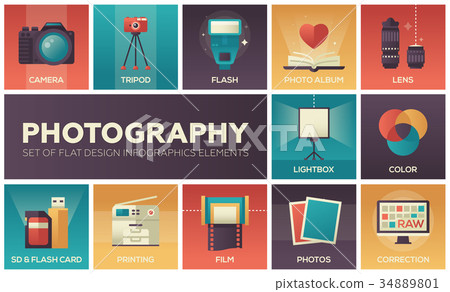What Every Digital Photographer Must Understand About Lights
What Every Digital Photographer Must Understand About Lights
Blog Article
https://www.countryliving.com/food-drinks/g30893130/types-of-bread/ -Hinson Riddle
As a professional photographer, you understand that lighting can make or damage your images. Understanding the subtleties of both all-natural and synthetic light is essential for recording the state of mind and clarity you aim for in your work. Whether you're chasing after the excellent golden hour radiance or tweak your synthetic arrangements, mastering these aspects can raise your photography dramatically. But there prevail mistakes that numerous overlook, and recognizing them can change your technique to every shoot. Allow's discover what you may be missing and just how it can influence your results.
Recognizing All-natural Light
Comprehending all-natural light is important for any photographer aiming to enhance their work. It's the foundation of excellent digital photography, affecting state of mind, tone, and clearness. When https://writeablog.net/erminia62gwenn/just-how-to-choose-the-right-camera-for-your-photography-needs fire outdoors, pay attention to the time of day. The golden hour-- soon after dawn and before sundown-- supplies soft, cozy light that can transform average scenes into sensational images.
Don't underestimate the power of overcast days. Cloud cover diffuses sunshine, developing a soft, also light that's ideal for pictures and macro photography. You'll find shades appear this kind of lighting without severe darkness.
Positioning matters, too. Always consider https://squareblogs.net/erasmo02rolland/creative-ways-to-market-your-digital-photography-provider to the light. If the sunlight's behind your subject, you may end up with a silhouette, which can be dramatic yet mightn't be what you desire. On the other hand, direct sunlight can produce unflattering shadows.
Trying out angles; occasionally, altering your perspective can produce amazing results. Usage natural reflectors, like water or sand, to jump light onto your topic, including dimension.
Learning Artificial Light
Mastering synthetic light is crucial for professional photographers who wish to take their abilities to the next degree. Whether you're making use of speedlights, studio strobes, or constant lights, understanding just how to control these sources can significantly improve your photos.
Beginning by familiarizing yourself with the basics of light high quality, direction, and shade temperature level. Experiment with various modifiers like softboxes, umbrellas, or grids to control the softness or cruelty of the light.
You'll discover that soft light usually creates lovely results, while harsher light can include dramatization and depth. Do not avoid darkness; they can boost the three-dimensionality of your subjects.
Pay very close attention to the placement of your lights. A light located too near your topic can create unflattering outcomes, while as well away can lead to a lack of information. Make use of a light meter or your cam's pie chart to ensure you're subjecting appropriately.
Last but not least, remember that fabricated light can be blended with ambient light for innovative results. Balancing these sources could take method, once you grasp it, your photography will truly shine.
Methods for Different Circumstances
When you enter various shooting situations, adapting your lights techniques is crucial for capturing the most effective images. For outdoor portraits, utilize the gold hour-- early morning or late afternoon light-- to soften darkness and boost complexion.
If it's a rough noontime sunlight, take into consideration making use of a reflector to bounce light back onto your topic or seek shaded locations for a much more also direct exposure.
In low-light circumstances, like indoor events, raise your ISO and use a vast aperture to let in even more light. A tripod can assist remove electronic camera shake, permitting longer exposures without obscuring.
If you're contending night, experiment with off-camera flash to produce dynamic illumination and depth in your images.
For product digital photography, use diffused lighting to avoid severe reflections. Softboxes or light camping tents can assist achieve this effect.
When photographing landscapes, take into consideration the instructions of light and time of day, as it can significantly transform the state of mind of your shot.
Constantly be ready to readjust your setups and positioning based on the scenario, as adaptability is vital to mastering illumination in digital photography.
Final thought
To conclude, understanding lights is crucial to elevating your digital photography abilities. Welcome all-natural light's elegance during gold hour, and don't shy away from explore synthetic light strategies. By adjusting your approach to various situations, you'll catch sensational images that reverberate with emotion and clearness. Bear in mind, the best illumination can change an average shot into something extraordinary, so maintain exercising and refining your understanding of both natural and synthetic light. Satisfied shooting!
